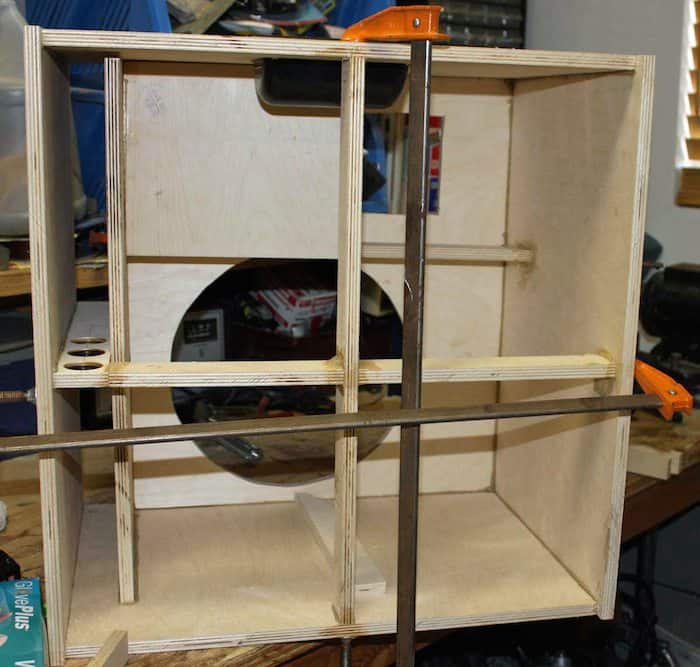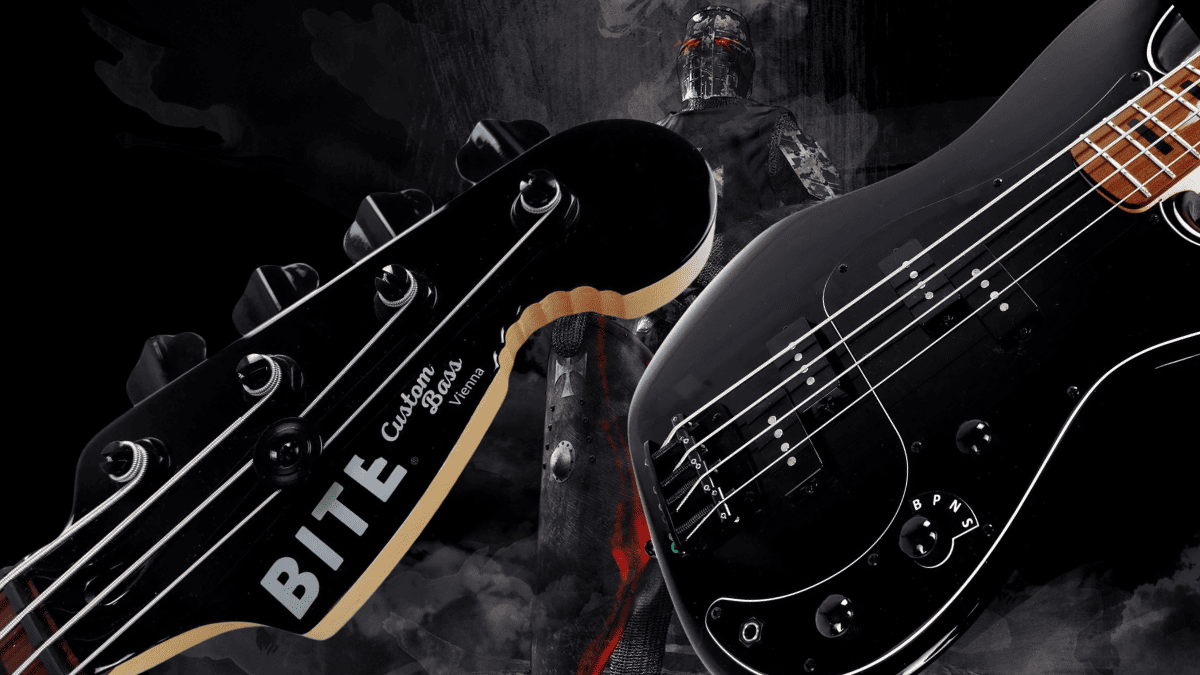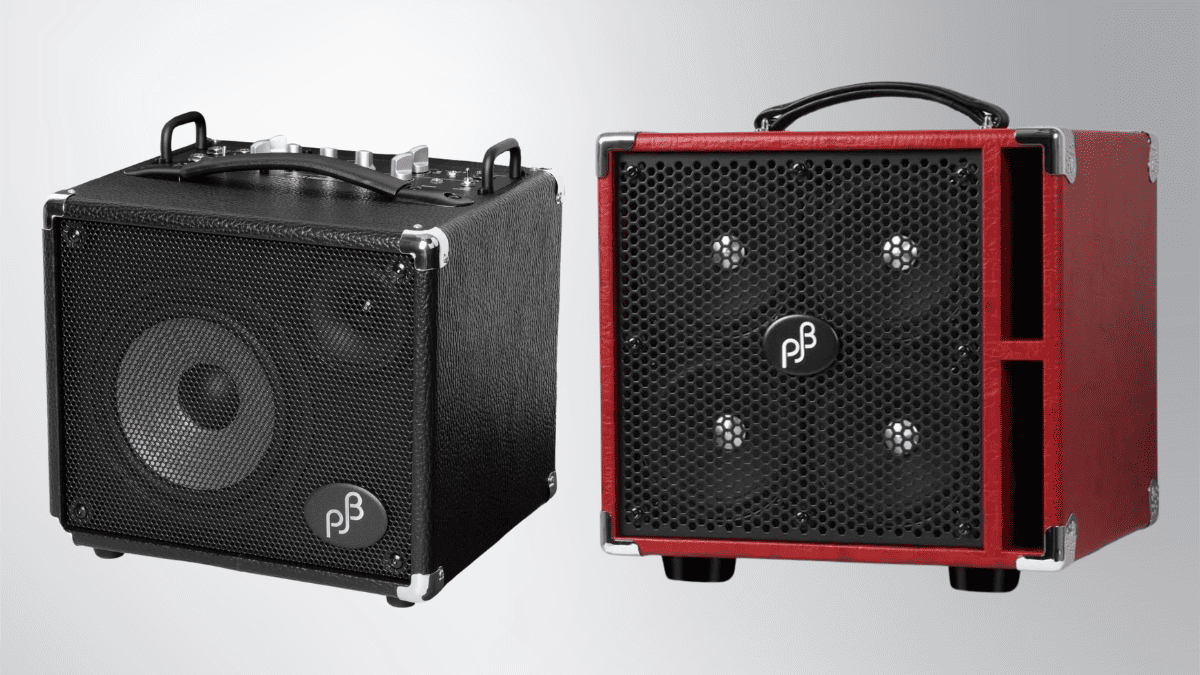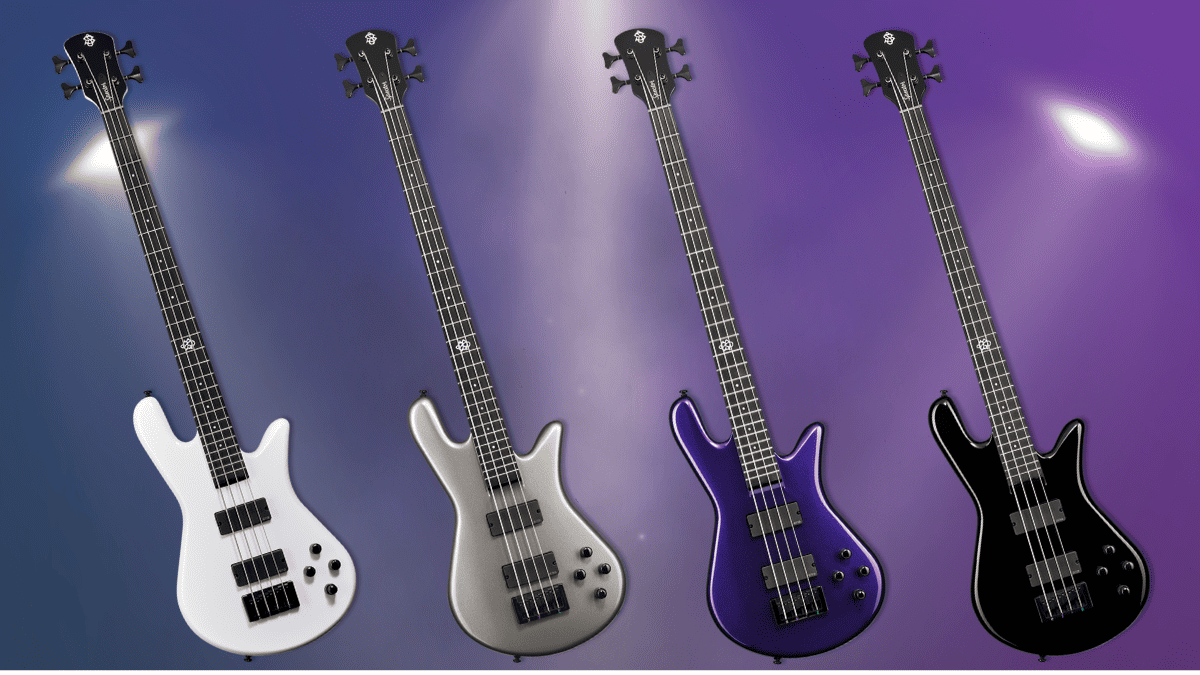Gear Reviews
Greenboy fEARful 12/6/1 Cube – A D.I.Y. Bass Cab Adventure

A D.I.Y. bass cab adventure in building my own Greenboy fEARful 12/6/1 Cube…

Background
I needed a compact, light weight, good sounding bass cabinet for some cool gigs where my 8×10 Fridge wasn’t welcome. After a good deal of research, I came across some discussions on Talkbass about a guy called “Greenboy” who lives in a remote cabin in Montana who had designed some kick-ass full range bass cabinets that readily reach down to a low F# and are lightweight to boot. The real kicker is that Greenboy, Dave Green, is also generous – he has made the Greenboy™ fEARful designs available, free of charge, to any home builder for personal use only. All of Greenboy’s fEARful designs use Eminence Kappalite 3012LF or 3015LF high excursion woofers paired with a midrange driver and an optional high frequency driver.

Choosing the Design


I found the users and builders forum to be extremely useful and entertaining as I studied the various designs and read the posts provided by other builders on their DIY experiences. Many of the builders have posted detailed descriptions and photographs of their builds as well as posting their own questions and comments. After much review, I decided on the 12/6/1 cube which utilizes the 3012LF woofer, Alpha 6 midrange and ASD 1001 compression driver – all Eminence products. In order to simplify the process, I purchased a kit from Leland Crooks at Speaker Hardware that included all the drivers, crossover components and other parts necessary for construction. Speaker Hardware even offers a Flat Pack that includes all the lumber pre-cut, but I opted to purchase the plywood locally and cut my own. I also purchased Duratex paint, internal dampening foam and speaker grilles from Speaker Hardware at an additional cost.
The Build
I purchased some 1/2 inch Baltic birch plywood from a local supplier and made the cuts spelled out in the cutting diagram and parts list by Greenboy.
Here’s a photo of all the wood cuts:

I then started gluing and clamping the cabinet together. Greenboy is a big proponent of using PL Premium polyurethane construction adhesive to fasten everything together. In short, this stuff is amazing – it gives an incredibly strong bond and will fill any minor imperfections between the bonding surfaces. Big Hint: use gloves with this stuff – it will stick quite well to skin too!

After the cabinet was constructed, I painted it flat black with a can of spray paint and over coated it with Duratex – a super durable coating that is specifically designed for speaker cabinets. I just rolled the stuff on with the provided textured foam roller. I am not a skilled painter and I think it came out looking great – this stuff is pretty easy to use.

The next step was cutting up the foam and gluing it in using spray adhesive

It was now time to wire it all up. I opted to use pre-printed circuit boards provided by Speaker Hardware, where I just put the electronic components in the correct locations on the circuit board and soldered them in place. I also wired up the various drivers to the crossovers and to the speaker jack plate.

And here is the final product:

In Use
The cube weighs in at about 48 pounds and is small enough in dimensions that I can easily carry it with one hand. This makes it a real joy to load into a gig. It is also, without a doubt, the most versatile bass cabinet I have ever owned. At indoor gigs I can easily keep up with live drums, two fairly loud guitars, a keyboard and a full PA system – this is pretty impressive for a single 12 inch woofer paired with a 6 inch midrange driver.
There is so much presence in the midrange driver that I often have the HF compression driver turned off. Turning on the HF driver turns the 12/6/1 cube into a miniature F.OH. system. Just for grins, I hooked it up to a powered mixing board and fed it some music from my iPhone – it sounded just like any good PA would, faithfully reproducing the full spectrum of the instrumentation for a well balanced sound. Recognizing that these Greenboy™ designed enclosures are full spectrum cabinets is important when one first starts using one for bass. I find the midrange and even upper mid’s to be more forward on the 12/6/1 Cube, in comparison to my other cabinets, and I therefore adjust my amplifier EQ accordingly.
In Retrospect
I really enjoyed the process of building my own speaker cabinet. I have completed other DIY projects and they haven’t always given me this sense of fulfillment. I attribute my contentment to the following:
1. The Greenboy™ products are very well thought-out, meticulously documented designs using high quality components.
2. The owner and builders forum provides guidance, support and a sense of community. During my build, I had mistakenly glued in one of the internal braces in the wrong orientation. The folks on the forum were very thoughtful and kind in pointing this out and they offered a few different, very practical suggestions to remedy the problem.
3. The end product really sounds good.
As far as cost goes, I invested about $500.00 in the wood, components, paint, etc. and a few weeks worth of time total. It is not the cheapest way to go, but I feel I got a huge bang for the buck. The retail cost of a similar product is considerably higher.
If, after reading this brief account of my latest DIY adventure, you are fired up to break out the saws and screw drivers – be careful and have fun! If you feel the DIY route is not for you, but that you are interested in Greenboy™ designs – take heart, there are a few options for you. There is a list of authorized builders on the Greenboy website for both Greenboy’s fEARful and FEARLESS products.
In Closing
I would like to thank Dave Green (Greenboy) for his talent, time and generosity in making these designs available free-of-charge to the bass community. I would also like to give some brief shout-outs to Leland Crooks, of Speaker Hardware, for making sure I got all the right parts and Joseph Hawley, of JHawk Customs and Greenboy Audio – for taking the time at NAMM to introduce me to the Greenboy™ product line of fEARful and FEARLESS products. You can learn more about the speaker components listed in the article at Eminence.com.
Gear Reviews
Review Transcript: BITE Custom Bass – The Black Knight PP Bass

This is a written transcript of our video review of the BITE Custom Bass Black Knight PP Bass originally published on March 4, 2024
BITE Custom Bass – The Black Knight PP Bass Review…
Bass Musician Magazine did a review on a Steampunk bass from BITE Guitars about three years ago, it was an amazing instrument, and we were very impressed. Now we’re happy to bring you another BITE bass, the Black Knight PP.
Everybody needs a P-type bass, it’s the standard of bass. If you’re recording, they want you to have a P bass. So why not have something that gives you a little more by having two instead of one P pickup. That’s the idea of this bass, it’s the first thing that leaps out: the double P pickup configuration.
Installing two of their 1000 millivolt split-coil pickups, BITE then went one step further and wired them up in a 4-way parallel/series circuit, a look at the controls reveal a 4-way rotary selector:
The first position, marked “B”, gives you the bridge pickup by itself.
The second position, marked “P”, gives you the bridge and neck pickups in parallel mode, that’s the traditional J-type circuit, it reduces output due to the physical law of parallel circuits.
Position number 3 is marked “N”, it gives you the neck pickup by itself.
And finally, number 4, marked “S”, gives your bridge and neck in a series (humbucking) mode which adds up resistances and thus boosts output. The other two controls are master volume and master tone.
What’s more, like every BITE bass, this one also has a reinforced headstock heel designed to give it extra output and sustain. The BITE website features a graph and explanation of what they have done to the heel, as compared to traditional headstocks.
A look at the body reveals a beautiful Black Blast body finish and underneath that we have alder wood. The bass has a matching headstock with a 4-in-line tuner setup and the traditional bite out of it, so everybody will know what kind of bass you’re playing. The pickguard is 3-ply black, the neck is vintage tinted hard maple and it has a satin speed finish at the back which keeps your thumb from sticking.
On top of that, there’s a clear-coated roasted black locust fretboard with black blocks marking the frets. The nut is a black Graph Tec nut, we’ve got diamond dome control knobs, and the tuners are lightweight compacts with cloverleaf buttons and a 1:17 ratio precision gear. The bridge is a Gotoh brass bridge with 19-millimeter string spacing.
Overall measurements: we’ve got a standard 34″ scale, a 1.65″ width nut and a C neck profile. This bass weighs 8.2 pounds, or 3,7 kilograms for our metric friends, and it uses standard 18% nickel silver frets.
Taking a closer look at the sound, this bass is a joy to play. The BITE proprietary 1000 millivolt pickups deliver an extraordinary amount of output which is surprising considering this is a passive instrument. You may even want to set your amp to active mode because of all of the juice you’re getting out of this guy.
The tonal possibilities are very versatile, it’s a straight P if you want but also much more with those different arrangements of the circuitry. So why have multiple basses when you’ve got one that can give you your basic P plus a lot more?
To sum it up, the Black Knight PP is an amazing instrument. The attention to detail that BITE puts into their basses is second to none. This bass is also amazingly balanced and gorgeous to hold and feel with the satin neck finish.
For more information, visit online at bite.guitars/product/black-knight-pp
Bass Videos
Reviews: Phil Jones Bass Compact Plus 450 and Bass Engine 17

Phil Jones Bass Compact Plus 450 and Bass Engine 17 Reviews…
In this issue, we take an in-depth look at two new amps from Phil Jones Bass, the Compact Plus 450 and Bass Engine 17.
For more information, visit online at pjbworld.com
Bass Videos
Video Review: BITE Custom Bass – The Black Knight PP Bass

BITE Custom Bass – The Black Knight PP Bass Review…
I am sure many of you saw my review of the Snobby Steampunk Bass from BITE Guitars back in February of 2021 and will remember what a remarkable bass it was. BITE has been building custom basses since 2019 and has a unique custom approach where you can configure your bass to your specs.
I am very excited to have another Bass From BITE Guitars in my hands, The Black Knight PP Bass!
The need for a P-Bass in one’s armamentarium is pretty standard for bass players and I recall chatting about this with Marty O’Brien about a year ago. It turns out that Marty and BITE Guitars got together and came up with this excellent configuration that gives you a P-Bass with a whole lot more. Marty even played his own Black Knight PP bass at the 2024 NAMM show. You can see his review here.
Join me as I take an in-depth look at this very cool instrument and share all the details.
Here is The Black Knight Bass from BITE Guitars!
For more information, visit online at bite.guitars/product/black-knight-pp
Gear Reviews
Gear Review: Origin Effects Cali76 Compact Bass

Origin Effects Cali76 Compact Bass Review…
Throughout the evolution of music, bass players have sought tools to sculpt and enhance their sonic landscapes, and one indispensable ally in this pursuit has been compression. Origin Effects, a name synonymous with premium audio craftsmanship, introduces the Cali76 Compact Bass Compressor, a pedal that pays homage to the legacy of compression and brings forth a new chapter in bass sonic mastery.
As we delve into the world of the Cali76 Compact Bass Compressor, we’ll explore how Origin Effects seamlessly weaves together the heritage of compression and contemporary bass demands, promising a pedal that not only honors the past but propels your bass playing into the future. Join us on this sonic expedition as we dissect the nuances of the Cali76 Compact and uncover the secrets it holds for bass players seeking the perfect blend of vintage warmth and modern versatility.
For Starters, the Cali76 is a studio-grade FET compressor pedal, based on the classic Urei 1176, but with some features optimized for bass guitar. For those of you who are not familiar with it, a FET (Field Effect Transistor) compressor is essentially a solid-state tube compressor emulation that allows for fast and precise control over the attack and the release parameters; allows for extreme compression ratios; and finally adds the typical 1176 color and character to the sound.
Together with the common controls we see in most compressor pedals – Ratio, Attack/Release, input (just like the original 1176, the threshold in this pedal is fixed), and output (makeup gain). The Cali76 offers two more controls dedicated to us bass players.
A Dry control – This allows us to mix in our dry, uncompressed signal to the pedal output. This is great for when we want to add back some of our playing dynamics to the compressed sound or for when you want some volume back in situations where the compression starts taking away the volume.
A High Pass Filter control – Low frequencies on a bass guitar signal normally overwhelm compressors. This high pass filter allows the compressor to only react to higher frequencies, which helps preserve the natural dynamics of our playing while keeping the low end intact.
Metering on this pedal can be a bit hard to get used to at first. There’s a single LED light on the pedal, that not only serves as an On/Off light, but it’s also our meter. It glows red when no compression is applied and orange for active compression. The brighter the light, the greater the amount of gain reduction. Yellow signifies that the gain reduction reached 27dB and maximum reduction occurs around 38 dB.
In practical terms, it’s all about working with the input and the LED to find the sweet spot (turn the input to zero, start playing and slowly increase the input level until you start seeing the LED glowing orange, which means there’s reduction going on).
With 6 highly interactive knob controls, this pedal implies some degree of compressor knowledge and also some amount of tweaking and experimentation to find the perfect settings. The good news is that it is very hard to make this pedal sound bad…
It can go from very subtle compression settings to very extreme, and it can do everything in between. Also, the team at Origin has been kind enough to add a couple of sample settings in the manual to get players started and to help us understand better how the pedal works.
Dynamic Control is a setting that provides natural compression, balancing dynamics between various playing techniques. It is a subtle compression that will work almost out of the box almost all the time. Having a medium setting for the High Pass Filter ensures an honest translation of the lower string dynamics.
Parallel compression is a popular studio technique, where both compressed and natural signals are blended. We get the sound and feel of hard compression while retaining the natural playing dynamics.
Percussive, lively & Fat is a setting that uses a slower attack time to accentuate the start of any note. Then using a fast release allows the compressor to recover between notes so that the phrases sound more percussive. Ideal for slapping and other percussive techniques.
Finally, I would like to mention the classic 1176 tonal coloration. It’s not a secret that engineers all around would sometimes use the 1176 compressor, without applying any compression, just to get the tonal coloration into the instrument sound.
And the Cali76 compressor is no different, it has such a rich, warm, and full coloration that’s super pleasing to the ear and makes you want to have it ON all the time. So be aware, that if you want a transparent compressor, this pedal is not for you!
All in all, it is easy to understand why this pedal became a favorite of so many bass players around the world. The Cali76 Compact stands as a testament to the meticulous craftsmanship and thoughtful engineering that Origin Effects is renowned for. It seamlessly navigates through the rich history of compression, offering bass players a gateway to the soulful resonance of the past while empowering them to sculpt a contemporary sonic future.
Whether you’re a seasoned bass maestro or a budding virtuoso, the Cali76 Compact invites you to embark on a sonic journey where every note is held in a delicate balance between tradition and innovation. As we bid farewell to our exploration, we do so with the realization that the Cali76 Compact is more than just a pedal; it’s a sonic companion that elevates the artistry of bass playing
For more information, visit online at origineffects.com
Gear Reviews
Spector NS Ethos HP 4 Bass Review

Spector NS Ethos HP 4 Bass Review…
Not long ago, I did a review of the Spector NS Dimension HP 5 Bass and I have just been given the honor and privilege of reviewing the Spector NS Ethos HP 4 Bass. I have to say, another great bass from Spector that is hard to put down! While there are some similarities between both basses, there are also some noticeable differences which is why I believe having both is essential to any bass arsenal.
Spector, widely used by many rock and metal bassists like Ian Hill, Alex Webster, Colin Edwin, Doug Wimbish, and many more, just to name a few, has a long-standing in these genres. Well, that’s about to change! The bass I used for the review, didn’t see any of those genres, matter of fact, I used it on a few classic country gigs and at church too! However, when at home in the studio, I let the funk out. The NS Ethos HP 4 Bass is an all-around great bass for any genre and will not disappoint.
Let’s get into the specs about the bass, and here we will find the differences between the HP 5 Bass and the HP 4.
Forget that one is a 5 string, while the other is a 4, while that is a difference, that’s not one that I feel needs to be noted as both models are available as 4 and 5 strings. The Spector NS Ethos HP 4 Bass has a 34” scale, 24 fret, 3 piece maple neck through construction with solid alder wings, ebony fingerboard along with centered and side dots and the 12th fret Spector logo inlay with a brass nut.
While the pickups are different as the NS Dimension HP 5 Bass uses the EMG 45DC and the NS Ethos HP 4 Bass sports the EMG 35DC pickups, they are the same pickup configurations, the difference being, one for 4 string, the other for 5 string. The electronics are the same, consisting of a Darkglass Tone Capsule preamp which consists of +-12dB @70Hz for Bass, +-12dB @500Hz for Mids, and +-12dB @2.8kHz for Hi Mids. Controls for Spector NS Dimension HP 5 Bass consist of Master Volume, Blend, Bass, Mid, and Hi Mid controls. The electronics are powered by a 9-volt battery.
The bridge is a Hi-Mass locking bridge with intonation screws and the tuners are sealed die-cast. All hardware is black. Same as the Spector NS Dimension HP 5 Bass, the HP 4 Bass is available in 4 different finishes, White Sparkle Gloss, Gunmetal Gloss, Plum Crazy Gloss & Black Gloss. The bass also comes with a very nice and well-padded gig bag.
Check out the Spector NS Ethos HP 4 Bass at a Spector Music Retailer today near you or visit online at spectorbass.com/product/ns-ethos-hp-4/















